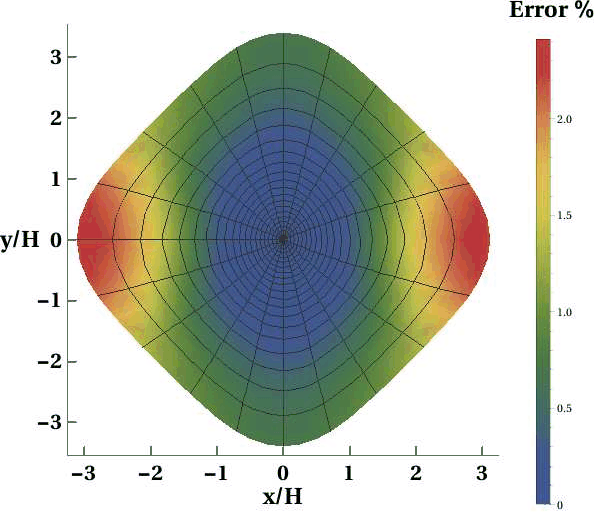|
|
|
|
3D generalized nonhyperboloidal moveout approximation |




|
|---|
|
onelayernmo,onelayeral,onelayerxu,onelayergma
Figure 2. Error plots in the homogeneous orthorhombic layer (Layer 1) of a) NMO ellipse b) approximation by Al-Dajani et al. (1998) c) approximation by Xu et al. (2005), and d) the proposed approximation. Note that b), c), and d) are plotted under the same color scale and |
|
|
For a more complex anisotropic medium, we consider a single horizontal layer of an orthorhombic material (Layer 1) with properties given in Table 1 with 1 ![]() thickness over flat reflector. The accuracy comparison between different approximations is shown in Figure 2. The reference rays for the generalized approximation (equation 1) were shot at
thickness over flat reflector. The accuracy comparison between different approximations is shown in Figure 2. The reference rays for the generalized approximation (equation 1) were shot at
![]() and and
and and
![]() along
along ![]() -axis, at and
-axis, at and
![]() and
and
![]() along
along ![]() -axis, at
-axis, at
![]() and
and
![]() along
along ![]() , and at
, and at
![]() and
and
![]() along
along ![]() . Note that the approximation by Xu et al. (2005) is a simplified version of that by Al-Dajani et al. (1998) and therefore, produces almost identical results with only a small difference (Figures 2b and 2c). The proposed approximation shows an error, which is several orders of magnitude smaller than that of previous approximations (Figure 2d).
. Note that the approximation by Xu et al. (2005) is a simplified version of that by Al-Dajani et al. (1998) and therefore, produces almost identical results with only a small difference (Figures 2b and 2c). The proposed approximation shows an error, which is several orders of magnitude smaller than that of previous approximations (Figure 2d).
|
|
|
|
3D generalized nonhyperboloidal moveout approximation |